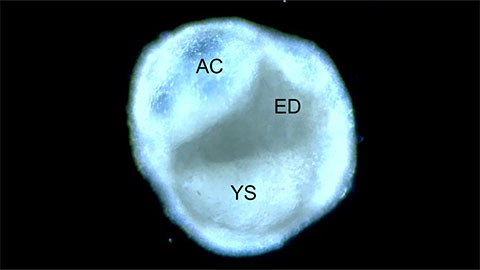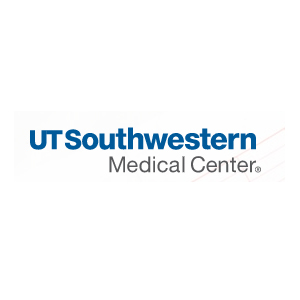UT Southwestern stem cell biologists develop embryo model
University of Texas Southwestern Medical Center biologists have developed a new stem cell-based embryo model for studying early human development, tissue formation and differentiation, offering valuable contributions to the field of developmental biology and regenerative medicine.
Peri-gastruloids are primitive embryonic structures with the potential to form many of the different cell types of the body, thereby providing a window into the earliest steps of embryogenesis. The findings on peri-gastruloids, published in the journal Cell, could impact a wide range of diseases and conditions that involve early human development, including developmental disorders, birth defects, genetic disorders and diseases that arise during embryonic development such as certain types of cancer or neurological disorders, researchers noted. Disease modeling and drug testing also can benefit from peri-gastruloid research.

“By generating peri-gastruloids, researchers can mimic and study the complex processes that occur during gastrulation and early organ formation, which is a critical period in embryonic development. This allows for a better understanding of the molecular and cellular events that shape the formation of different tissue layers,” explained Jun Wu, assistant professor of molecular biology and member of the Harold C. Simmons Comprehensive Cancer Center at UT Southwestern.
“Studying peri-gastruloids allows researchers to gain insights into how abnormalities or genetic mutations can impact the early stages of human development. This knowledge can be used to model and understand developmental disorders or diseases that arise during early embryonic development. Additionally, peri-gastruloids can serve as a platform for testing the efficacy and safety of potential drugs or therapies targeting these conditions,” Wu said.
Lizhong Liu was the lead author of the study. “The ability to model human development using peri-gastruloids can provide insights into the mechanisms behind tissue formation and differentiation. This knowledge can be applied to improve regenerative medicine approaches, such as generating specific cell types or tissues for transplantation or repairing damaged organs,” said Liu, an assistant instructor of molecular biology in the Wu lab, which focuses on using stem cell models to learn more about mammalian development and create regenerative medical applications.
While in vitro stem cell models that recapitulate human gastrulation have been established, they lack the essential extraembryonic cells needed for embryonic development, morphogenesis, and patterning. The new approach provides a robust and efficient method that prompts human pluripotent stem cells to self-organize into peri-gastruloids, which encompass both embryonic (epiblast) and extraembryonic (hypoblast) tissues. Although peri-gastruloids are not viable due to the exclusion of trophoblasts, they can simulate critical stages of human peri-gastrulation development, such as forming amniotic and yolk sac cavities, developing bilaminar and trilaminar embryonic discs, specifying primordial germ cells, initiating formation of primary germ layers, and early organogenesis.
By replicating conditions in vitro, researchers can delve into the underlying mechanisms and identify potential therapeutic targets for the eventual development of novel treatments or interventions for patients. Researchers also can expose peri-gastruloids to various drugs or compounds to evaluate their efficacy and potential side effects. This can help in identifying promising drug candidates and ensuring the safety of pharmaceutical interventions before they are tested in human clinical trials.
“Overall, the study’s findings on peri-gastruloids contribute to the advancement of clinical solutions by providing a platform for regenerative medicine, disease modeling, and drug testing, which have the potential to lead to the development of new therapies, improved treatment strategies, and enhanced safety assessment methods for the benefit of patients,” said Wu.
Generating new stem cells and stem cell-based embryo models to study embryogenesis and developing translational applications using stem cells represent the central directions of the Wu lab. The lab currently focuses on deriving novel pluripotent stem cells, identifying and overcoming the xenogeneic barriers, studying novel regulators of pluripotency, and generating stem cell-based models of mammalian embryos.
A version of this article was first published by the University of Texas Southwestern Medical Center. Read the original.
Enjoy reading ASBMB Today?
Become a member to receive the print edition four times a year and the digital edition monthly.
Learn moreGet the latest from ASBMB Today
Enter your email address, and we’ll send you a weekly email with recent articles, interviews and more.
Latest in Science
Science highlights or most popular articles

Exploring the link between lipids and longevity
Meng Wang will present her work on metabolism and aging at the ASBMB Annual Meeting, March 7-10, just outside of Washington, D.C.

Defining a ‘crucial gatekeeper’ of lipid metabolism
George Carman receives the Herbert Tabor Research Award at the ASBMB Annual Meeting, March 7–10, just outside of Washington, D.C.

The science of staying strong
Muscles power every movement, but they also tell the story of aging itself. Scientists are uncovering how strength fades, why some species resist it and what lifestyle and molecular clues could help preserve muscle health for life.

Bacteriophage protein could make queso fresco safer
Researchers characterized the structure and function of PlyP100, a bacteriophage protein that shows promise as a food-safe antimicrobial for preventing Listeria monocytogenes growth in fresh cheeses.

Building the blueprint to block HIV
Wesley Sundquist will present his work on the HIV capsid and revolutionary drug, Lenacapavir, at the ASBMB Annual Meeting, March 7–10, in Maryland.

Gut microbes hijack cancer pathway in high-fat diets
Researchers at the Feinstein Institutes for Medical Research found that a high-fat diet increases ammonia-producing bacteria in the gut microbiome of mice, which in turn disrupts TGF-β signaling and promotes colorectal cancer.

